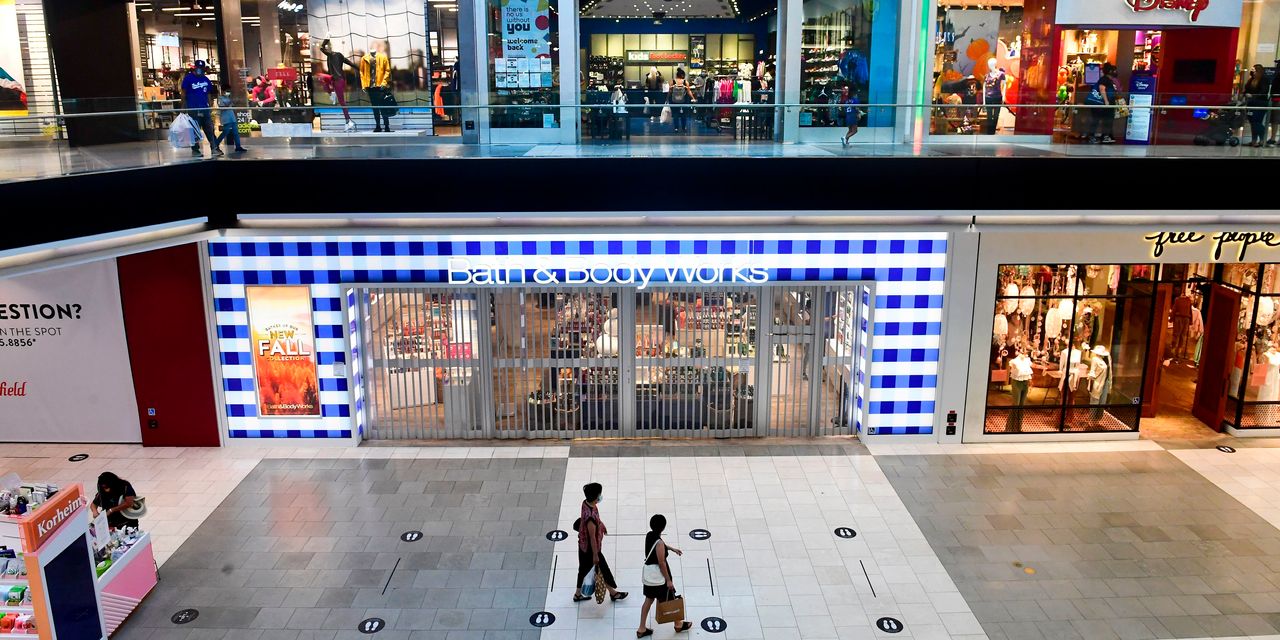
Investors should expect other “eye popping” sales numbers from retailers in the coming weeks, amid a “weird” year in which the COVID-19 pandemic wreaked havoc on the retail and restaurant segments.
In its most recent earnings report, retailer At Home Inc. HOME, -3.18% reported nearly 31% same-store sales growth in its fourth quarter, with full-year comparable sales up 19%.
LongHorn Steakhouse parent Darden Restaurants Inc. DRI, +0.90% said same-restaurant sales increased 23.2% for the week ending March 21.
Dave & Buster’s Entertainment Inc. PLAY, -0.56% said comp sales for 2020 sank 70%.
See: Dave & Buster’s rang up less than one-third the revenue in 2020 compared with prior year
As consumer companies begin to lap the store closures, dining-room restrictions and other measures taken during the COVID-19 pandemic in 2020, the comparable sales numbers, or same-store sales, promise to be more unusual than those many are used to seeing.
Experts say companies must provide context for these numbers in order to cast them in the proper light, highlighting the anomalies at play and the fundamentals of the business.
“The numbers are going to look big at first glance but it’s because of dismally low numbers from a year ago,” said Mark Kalinowski of Kalinowski Equity Research.
“Same-store sales in casual dining were all quite negative in January and February, and March is weird. So if you’re looking at a single day, week or month, you could be talking about wildly different numbers.”
Also: ‘Plexiglas will stay up for a while’: Shoppers remain anxious about COVID but head back to stores
Kalinowski’s first-quarter Casual Dining Same-Store Sales Index, which looks at the comparable sales for this segment across January, February and the first half of March, estimates a 1.2% same-store-sales decline. “Our implied numbers for this January, February, and all of March are approximately -19%, -20%, and +45%, respectively,” the report says.
Experts with whom MarketWatch spoke, including Kalinowski, say the better comparison is 2019, the last pre-pandemic year. Some companies have already said they would take that approach.
“While we are starting the year more challenged than two years ago, due to the ongoing impact of COVID-19 on stores, we believe this is the right comparison and measurement for our business performance,” said Francis Conforti, chief operating officer at Urban Outfitters Inc. URBN, +2.35%, during the company’s fourth-quarter earnings call last month, according to FactSet.
Brian Yarbrough, consumer discretionary analyst at Edward Jones, agreeing that looking at pre-pandemic figures is a better way of analyzing a business right now, raises a couple of other questions about 2021 that investors should consider.
The beginning of the year has a one-time benefit for many consumer companies: stimulus money that’s being pumped into bank accounts, driving spending.
And what will happen to beneficiaries of the pandemic, like Walmart Inc. WMT, -0.21% and Home Depot Inc. HD, -0.42%, when things normalize and spending shifts back to travel and other leisure activities.
“The pendulum probably swung too far in terms of a benefit for those that stayed open, and too far negative for those that closed,” he said. Companies whose shares are selling “at multiples well above historical levels, it’s not going to hold, and you’re going to see some pressure on shares.”
Overall, he forecasts volatility in the near term, though he does believe there exists pent-up demand. And as Edward Jones tends to look at the long term, he thinks things will trend in favor of retailers further down the line. “We’re going to see more bankruptcies and mall closures which will benefit those that invest in digital,” he said.
Don’t miss: Dick’s Sporting Goods launching concept store as competition heats up with Nike and other big brands
Nikki Baird, vice president of retail innovation at Aptos, an enterprise retail technology provider, said she has seen comps of more than 2,000%. Some retailers are lapping periods in which sales dropped all the way to zero. “There will be some eye-popping numbers,” she said.
Baird tells clients that they need to be prepared to address tough topics.
“Investors should push back, and retailers should expect the question: How much of this is a one-time surge? This isn’t the same situation you’ll face next year. How do you take the results from this year and right-size in 2022?”
Grocers have already started preparing for a time when consumers will spend less time in the kitchen with investments in quick-serve meals and spending to help customers maintain their “love of eating at home,” she says.
And for fashion retailers, Baird suggests that companies look at comparable sales on a ZIP Code or regional level rather than on an individual store basis, which takes into account all of the activity at a location, including online sales and other factors.
“Many people will write off 2021 as a weird year as people transition out of a pandemic,” she said. “If you frame 2021 as a benchmark and take that and run with it, there will be skepticism.”
As we moved from 2020 to 2021, Baird says retail traded one set of unpredictable circumstances for another. “The uncertainty a year ago was about the pandemic. Now, these consumer habits are the bigger uncertainty as vaccines roll out and things open back up.”





